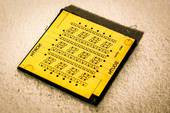IGERT Story
Superconducting circuits, simplified
Description
Computer chips with superconducting circuits — circuits with zero electrical resistance — would be 50 to 100 times as energy-efficient as today’s chips, an attractive trait given the increasing power consumption of the massive data centers that power the Internet’s most popular sites.
Superconducting chips also promise greater processing power: Superconducting circuits that use so-called Josephson junctions have been clocked at 770 gigahertz, or 500 times the speed of the chip in the iPhone 6.
But Josephson-junction chips are big and hard to make; most problematic of all, they use such minute currents that the results of their computations are difficult to detect. For the most part, they’ve been relegated to a few custom-engineered signal-detection applications.
In the latest issue of the journal Nano Letters, MIT researchers present a new circuit design that could make simple superconducting devices much cheaper to manufacture. And while the circuits’ speed probably wouldn’t top that of today’s chips, they could solve the problem of reading out the results of calculations performed with Josephson junctions.
The MIT researchers — Adam McCaughan, a graduate student in electrical engineering, and his advisor, professor of electrical engineering and computer science Karl Berggren — call their device the nanocryotron, after the cryotron, an experimental computing circuit developed in the 1950s by MIT professor Dudley Buck. The cryotron was briefly the object of a great deal of interest — and federal funding — as the possible basis for a new generation of computers, but it was eclipsed by the integrated circuit…
Read full article >>
See Nano Letters article.






